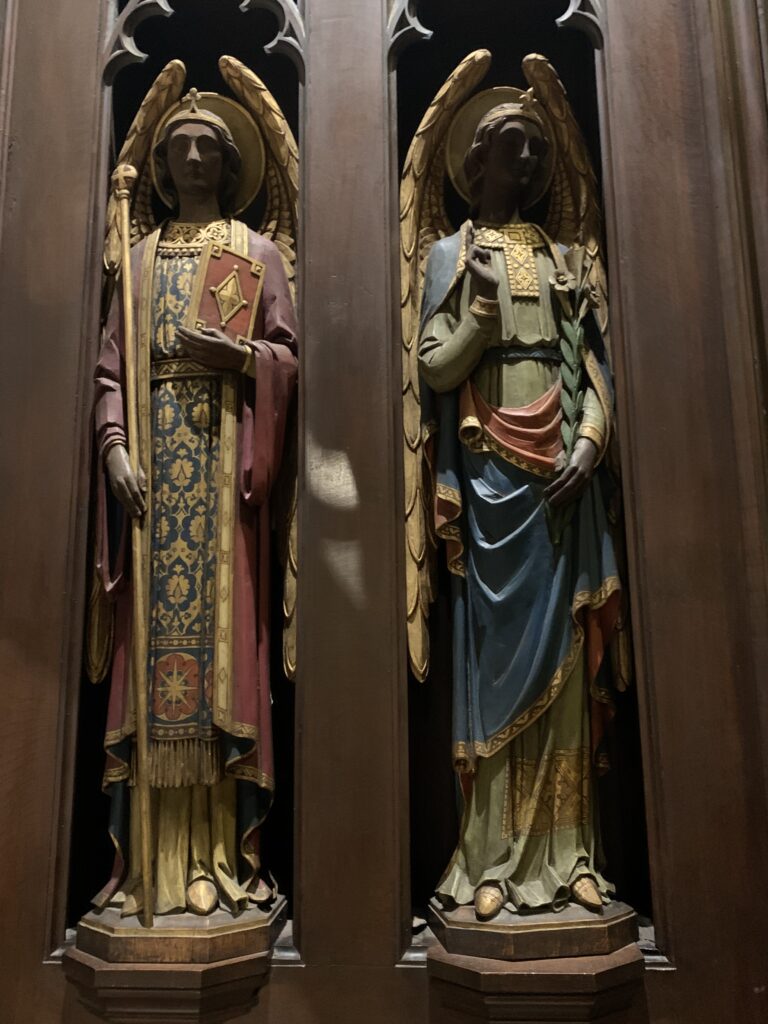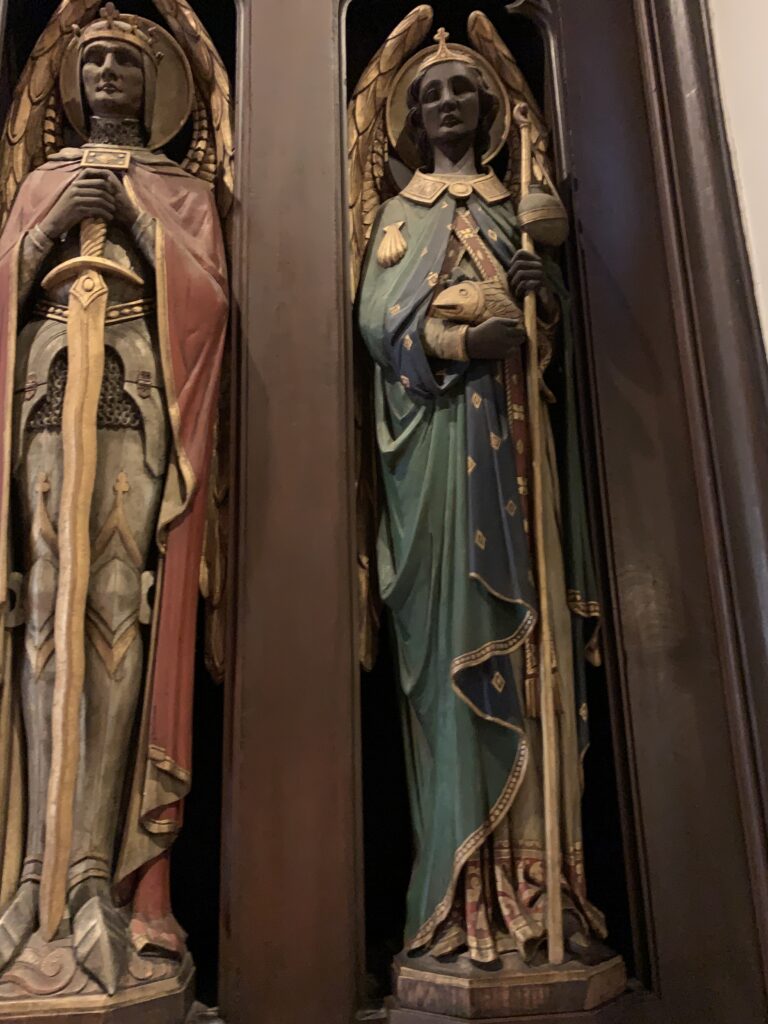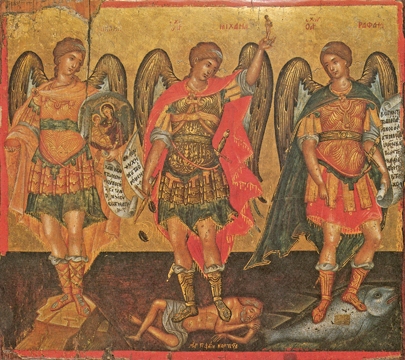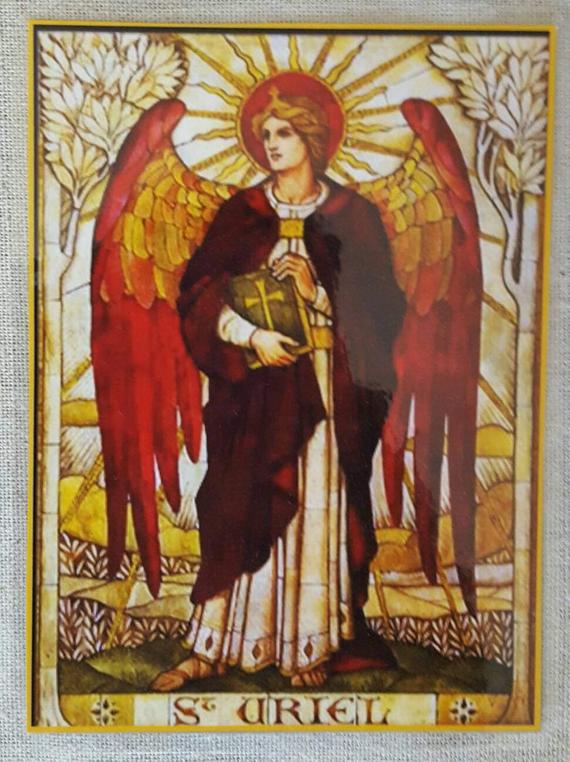
Mosaic of St. Uriel by James Powell and Sons, at St John’s Church, Warminster. 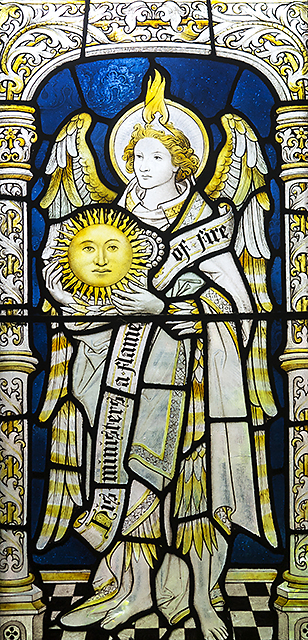
Saint Uriel (meaning ‘God is my light’ or ‘light of God’), one of four stained glass windows in the cloisters of Chester Cathedral depicting the Archangels mentioned in the Christian Bible. Uriel is often depicted holding flame or the sun.
Archangel Uriel appears in the Second Book of Esdras found in the Biblical apocrypha in which the prophet Ezra asks God a series of questions and Uriel is sent by God to instruct him. This is one of my favorite episodes involving angels: Ezra asks Uriel to explain the visions to him and Uriel replies: “I will answer your question if you can answer mine: How much does fire weigh? How much wind can fit in a bag? Where does the day go when it is over?” Ezra cannot answer these and Uriel tells him, “If you cannot answer these questions about things you have direct experience of, how can you expect to understand the secrets of God, which you have no direct experience of?”
In Christian folktales, Uriel plays a role in the rescue of Jesus‘ cousin John the Baptist from the Massacre of the Innocents ordered by King Herod. St. Uriel carries St. John the Baptist and his mother Saint Elizabeth to join the Holy Family after their Flight into Egypt. This family reunion is depicted in Leonardo da Vinci‘s Virgin of the Rocks.
In other Christian folktales, St. Uriel stands at the Gate of Eden with a fiery sword and in the Life of Adam and Eve, Uriel is said to be one of the cherubim described in the third chapter of Genesis guarding the Tree of Life. He is also identified as one of the angels who helped bury Adam and Abel on the edge of Eden.
In British Christianity, St. Uriel is sometimes considered the Patron Saint of the Sacrament of Confirmation. The motto of Oxford University (“Dominus illuminatio mea“) is thought by some to be a variation of St. Uriel’s name in Latin.

